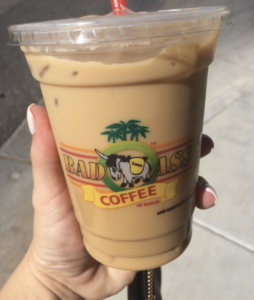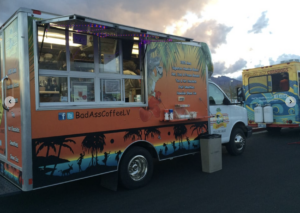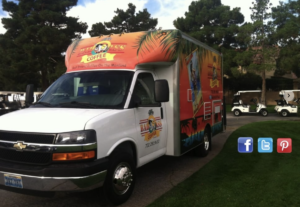A decade ago, social media wasn’t a big part of business strategies—most advertising was done through TV, billboards, and other traditional methods. But today, having a presence on social media is essential for any successful business, including food trucks. Customers now expect constant updates, including links, funny quotes, and attractive pictures, to stay engaged and aware of our presence.
For food truck owners, letting people know where you are is crucial. While managing social media can seem overwhelming, especially if it’s new to you, it doesn’t have to be. Posting regular updates, sharing your location, and highlighting your food are simple ways to start. Let’s dive into some key strategies to make the most of social media for your food truck.
Different Marketing Options
Food trucks can leverage several social media platforms to gain exposure, but it’s crucial to concentrate on a few key ones to avoid spreading yourself too thin. Each platform offers unique advantages and appeals to different demographics, so it’s essential to select those that best match your brand and target audience.
1. Instagram: Visual Appeal and Engagement
Instagram has been a game-changer for us. Coffee is inherently a visual product – from the art on top of lattes to the vibrant colors of our truck – so it’s perfect for this platform. We focus on posting high-quality photos of our drinks, the truck, and happy customers. We also make sure to use relevant hashtags like #LasVegasCoffee, #FoodTruckLife, and #BadassCoffee, which help us reach locals and coffee lovers.
A particularly successful campaign we ran involved a weekly feature called “Customer Creations,” where customers would design their own coffee drink. We’d post a photo of them with their creation, tag them, and encourage followers to come by and try it themselves. This not only engaged our existing customer base but also encouraged them to share our posts, extending our reach.

The visual appeal of Instagram is ideal for food truck marketing.
Jason, the owner of Badass Coffee Truck, said, “We’ve seen a huge response from our Instagram campaigns. People love to see their own creations and it makes them feel like they’re part of the Badass Coffee family.”
2. Facebook: Community Building and Events
On Facebook, we focus more on building a community and keeping our customers informed. This platform is great for sharing updates about our location, special promotions, and events. We’ve created a community page where we encourage customers to share their experiences and photos. This generates organic content and makes customers feel like they’re part of something special.
We’ve also had success with Facebook Events. Whenever we plan to be at a big festival or local event, we create a Facebook event to let people know. We invite all our followers and encourage them to invite their friends. This has led to a noticeable increase in foot traffic at events, as people are more likely to visit if they’ve seen the event in their feed and have already shown interest.
3. TikTok: Creative Content and Virality
TikTok is all about creativity and has been a fun platform for us to explore. We use it to post short, engaging videos – everything from a day in the life of the truck to behind-the-scenes clips of us making drinks or prepping for a big day. One of our most popular videos was a time-lapse of us setting up for an early morning event, which gave followers a peek into the hustle behind the scenes.
“We’re always looking for new ways to connect with our customers,” Jason said. “TikTok allows us to showcase our personality and the fun side of running a coffee truck, which resonates with a lot of people.”
We’ve also hopped on trending challenges and sounds that fit our brand. For example, we did a coffee-themed dance challenge that went viral, gaining us thousands of new followers almost overnight. TikTok’s algorithm is great for reaching new audiences, and we’ve seen a significant number of people come to the truck after finding us on the platform.


Preparing for service.
4. X: Real-Time Updates and Customer Interaction
X is less about visual appeal and more about real-time updates and interaction. We use it to announce our daily location, which is crucial for food trucks. We also engage with our customers by responding to tweets and retweets about us. It’s a great way to have direct conversations with our followers and keep them informed on the go.
We’ve noticed that other food trucks use X in similar ways, but some also use it for flash sales or quick promotions. For instance, another coffee truck in town might tweet a special discount code for the first 10 customers who mention the tweet. This kind of immediacy works well on X, where users expect fast, frequent updates.
5. Collaborations and Influencers
We’ve also done a few collaborations with local influencers and other food trucks. By inviting influencers to try our coffee and post about it, we’ve tapped into their follower base. One memorable collaboration was with a popular Vegas food blogger. We invited them to do a live review on Instagram, which brought in a lot of new customers who wanted to try the drinks they saw.
We also team up with other food trucks for cross-promotions. For example, we’ve partnered with a local taco truck for a “Taco & Coffee Tuesday” promotion, where customers get a discount when they purchase from both trucks. These kinds of partnerships help us reach a wider audience and create a more vibrant community.
Managing it All
Finishing off this discussion on food trucks with social media, we’ve conducted a short interview with John Helms of Badass Coffee of Hawaii truck to find out how it all works.


The Bad Ass Coffee Truck in Las Vegas.
Question: Let’s start out with you. Tell us about yourself and the food truck.
John: My family and I were inspired to open a Bad Ass Coffee of Hawaii store after becoming fans of it in Park City, Utah. The food truck industry was taking off here in Las Vegas in 2012, so the idea of turning a gourmet Kona coffee bar into a mobile store came naturally to us. We keep a regular schedule, which can be found on our website, and you’ll see us at all types of public and private events around town.
Q: Now, besides Facebook and X, do you guys use any other forms of Social Media for your business?
John: Our target market is the largest demographic on Facebook, so we concentrate most of our efforts there with cross-posting on X, and we utilize Instagram as well.
Q: What tools and programs do you use, if any, on social media besides simply posting?
John: We use a great app called Pagemodo to help us design cover photos and stylized posts that look professional. We are participators in social media; we don’t just post and wait — we like to have real conversations with our customers. As part of the community, we also like to help other local businesses by sharing their events and posts as well.
Q: Are there any particular strategies that you use in Facebook or X?
John: Most of our posts are organic, but we also schedule posts that will be relevant throughout the week. Our posts range from fun photos and memes to links with informative articles about coffee and the industry. Pagemodo, again, is an excellent source of content, and posts can be scheduled ahead so that if we are busy on the road, our social media pages are still active. We’ll do a big push if we have a big public event coming up.
Q: In your opinion, what’s the most challenging aspect to proper social media advertising for food trucks?
John: Most food trucks run on a very tight budget, and advertising is expensive. We find social media to be the best way to communicate with our customers and identify potential new ones in an inexpensive way compared to traditional advertising channels. Still, it is challenging to constantly produce compelling content and cut through all the noise to get people’s attention.

Q: Why is it important though?
John: It’s important because we live in a fast-paced community where everything is moving at the speed of the Las Vegas lights. We have to reach our customers where they are, and that is online, on social media. We simply can’t depend on TV or print ads to reach them.
Q: What advice and suggestions do you have for new owners when it comes to using social media? Any last things they should be aware of and look into?
John: Our advice is to know your customer and create relationships with them; interact with them, otherwise they will just scroll through and pass you by. Diversify posts and networks to reach different crowds, and don’t use different handles for each network—it’s too difficult for your customers to remember. We use @badasscoffeelv across the board.














